There are several vitamins and mineral supplements that many people can benefit from — but it’s important to consult with a healthcare provider before you start one

A lot of people turn to vitamin supplements to make sure they’re getting the nutrients they need each day. It’s estimated that about half of adults in the United States take some type of vitamin or mineral supplement daily.
Advertisement
Cleveland Clinic is a non-profit academic medical center. Advertising on our site helps support our mission. We do not endorse non-Cleveland Clinic products or services. Policy
Supplements are one way to meet the recommended daily allowance (RDA) of vitamins and minerals you need for a healthy body. But they’re not the only way. And they’re typically not the best way, says registered dietitian Kate Patton, RD, LD.
“We need vitamins to break down macronutrients like carbohydrates, fat and protein and help our bodies to function. It’s best to get your vitamins and minerals from eating a diet that’s healthy for you. But a supplement can give your body a boost if you need it,” she says.
Patton shares thoughts on some of the most vital vitamins you should have every day. And she offers advice on what vitamin supplements to talk with your provider about if you worry you’re not getting enough from the foods you eat.
Here’s the bad news: If you’re looking for a one-size-fits-all recommendation for what vitamin supplements you should take each day, it’s not that easy.
Everyone’s needs are different. Some people need different amounts of certain vitamins and minerals because of the ways their bodies work. Or because of their health goals. Or because they eat a restricted diet.
“People might take a supplement if they don’t eat meat, for example. Or they don’t eat enough fruits or vegetables,” Patton notes. “Others might take supplements for the antioxidant benefits. And some people may have a true deficiency that can be best addressed with a supplement.”
Advertisement
But there’s good news, too: It’s entirely possible for most people to get at least the majority of the vitamins and minerals they need through their foods. And if not, a healthcare provider, like a registered dietitian can help you choose vitamins that you should consider taking.
The best way to get what your body needs is to talk to a healthcare provider before taking any kind of supplement. They can help you decide which product or products to take, or if you need to take any vitamin supplements at all. They can also help you avoid potential interactions between supplements and other medications you’re taking. That’s important because some supplements don’t play well with certain medicines.
That said, there are certain vitamins and minerals where deficiencies are more common. And without them, your body can’t function at its best.
Think of vitamin supplements as an insurance policy to make sure you’re getting everything you need — not as a replacement for healthy eating.
Patton shares some of the vitamins and minerals that are vital to your body and that you may not be getting enough of. Talk with your healthcare provider if you think you should take supplements for these important nutrients.
What is it?
Vitamin A is also known as retinol. It’s a fat-soluble vitamin, which means your body stores excess vitamin A. So, it’s possible to get too much vitamin A. Take caution to not take more than recommended by a healthcare provider.
Vitamin A helps your body in a number of ways, like:
Recommended daily allowance (RDA)
*Note: Vitamin A toxicity during pregnancy can lead to fetal development issues. People who are pregnant shouldn’t take excessive doses of vitamin A.
Vitamin A foods
| Food | Serving size | Mcg per serving | % Daily value (DV) of vitamin A |
|---|---|---|---|
| Sweet potato | 1 potato | 1,403 mcg | 156% |
| Frozen boiled spinach | 1/2 cup | 573 mcg | 64% |
| Raw carrots | 1/2 cup | 459 mcg | 51% |
| Atlantic pickled herring | 3 ounces | 219 mcg | 24% |
| Skim milk with added vitamin A | 1 cup | 149 mcg | 17% |
| Food | |||
| Sweet potato | |||
| Serving size | |||
| 1 potato | |||
| Mcg per serving | |||
| 1,403 mcg | |||
| % Daily value (DV) of vitamin A | |||
| 156% | |||
| Frozen boiled spinach | |||
| Serving size | |||
| 1/2 cup | |||
| Mcg per serving | |||
| 573 mcg | |||
| % Daily value (DV) of vitamin A | |||
| 64% | |||
| Raw carrots | |||
| Serving size | |||
| 1/2 cup | |||
| Mcg per serving | |||
| 459 mcg | |||
| % Daily value (DV) of vitamin A | |||
| 51% | |||
| Atlantic pickled herring | |||
| Serving size | |||
| 3 ounces | |||
| Mcg per serving | |||
| 219 mcg | |||
| % Daily value (DV) of vitamin A | |||
| 24% | |||
| Skim milk with added vitamin A | |||
| Serving size | |||
| 1 cup | |||
| Mcg per serving | |||
| 149 mcg | |||
| % Daily value (DV) of vitamin A | |||
| 17% |
What are they?
Eight B vitamins make up the vitamin B complex. Each has different specific functions in your body. They come from different food sources and have different RDAs. B vitamins are water-soluble.
“The majority of B vitamins are used to turn food into energy,” Patton elaborates. “They also support healthy cell creation, growth and development.”
Advertisement
The B vitamins are:
B vitamin foods
In the U.S., many cereals, flour, breads and pastas are routinely fortified with B vitamins to minimize the risk of deficiency. B vitamins are commonly found in leafy green vegetables, animal proteins and whole grains.
Vitamin B12 is most commonly associated with animal products. People who don’t eat meat are often advised to take a B12 supplement.
Niacin supplements used to be commonly recommended for people with high cholesterol. But research now shows that high levels of niacin have been associated with heart disease. Talk with a healthcare provider about niacin supplements.
What is it?
Vitamin C is a water-soluble vitamin containing antioxidants that promote healthy tissue growth. It’s perhaps best known for giving your immune system a boost.
Among vitamin C’s many benefits are its ability to help:
Advertisement
And for people who have an iron deficiency, vitamin C can help your body absorb it better.
“If you’re trying to maximize your iron absorption, having more vitamin C is beneficial,” Patton notes.
RDA
People who smoke require an additional 35 mg per day of vitamin C to counteract some of the oxidative stress that smoking causes in your body. But no supplement can undo the effects of smoking. Quitting smoking is the best thing you can do for your health.
Vitamin C foods
| Food | Serving size | Mg per serving | % DV of vitamin C |
|---|---|---|---|
| Raw red pepper | 1/2 cup | 95 mg | 106% |
| Orange juice | 3/4 cup | 93 mg | 104% |
| Orange | 1 medium | 70 mg | 78% |
| Grapefruit juice | 3/4 cup | 70 mg | 78% |
| Kiwi | 1 medium | 64 mg | 71% |
| Food | |||
| Raw red pepper | |||
| Serving size | |||
| 1/2 cup | |||
| Mg per serving | |||
| 95 mg | |||
| % DV of vitamin C | |||
| 106% | |||
| Orange juice | |||
| Serving size | |||
| 3/4 cup | |||
| Mg per serving | |||
| 93 mg | |||
| % DV of vitamin C | |||
| 104% | |||
| Orange | |||
| Serving size | |||
| 1 medium | |||
| Mg per serving | |||
| 70 mg | |||
| % DV of vitamin C | |||
| 78% | |||
| Grapefruit juice | |||
| Serving size | |||
| 3/4 cup | |||
| Mg per serving | |||
| 70 mg | |||
| % DV of vitamin C | |||
| 78% | |||
| Kiwi | |||
| Serving size | |||
| 1 medium | |||
| Mg per serving | |||
| 64 mg | |||
| % DV of vitamin C | |||
| 71% |
What is it?
Vitamin D is an essential fat-soluble vitamin that is activated by ultraviolet (UV) light. So, people who spend considerable time indoors are at higher risk for deficiency.
“Vitamin D deficiencies are pretty common,” says Patton. “Doctors may test your vitamin D levels and sometimes they are low enough that people need a prescription-strength dose of vitamin D.”
Vitamin D drops are also routinely recommended for babies who are breastfed (chestfeed). And many infant formulas are fortified with vitamin D.
The benefits of vitamin D include:
Advertisement
RDA
Vitamin D foods
| Food | Serving size | Mcg per serving | % DV of vitamin D |
|---|---|---|---|
| Cod liver oil | 1 tablespoon | 34 mcg | 170% |
| Cooked rainbow trout | 3 ounces | 16.2 mcg | 81% |
| Cooked sockeye salmon | 3 ounces | 14.2 mcg | 71% |
| Raw white mushrooms that have been exposed to UV light | 1/2 cup | 9.2 mcg | 46% |
| 2% milk, fortified with vitamin D | 1 cup | 2.9 mcg | 15% |
| Food | |||
| Cod liver oil | |||
| Serving size | |||
| 1 tablespoon | |||
| Mcg per serving | |||
| 34 mcg | |||
| % DV of vitamin D | |||
| 170% | |||
| Cooked rainbow trout | |||
| Serving size | |||
| 3 ounces | |||
| Mcg per serving | |||
| 16.2 mcg | |||
| % DV of vitamin D | |||
| 81% | |||
| Cooked sockeye salmon | |||
| Serving size | |||
| 3 ounces | |||
| Mcg per serving | |||
| 14.2 mcg | |||
| % DV of vitamin D | |||
| 71% | |||
| Raw white mushrooms that have been exposed to UV light | |||
| Serving size | |||
| 1/2 cup | |||
| Mcg per serving | |||
| 9.2 mcg | |||
| % DV of vitamin D | |||
| 46% | |||
| 2% milk, fortified with vitamin D | |||
| Serving size | |||
| 1 cup | |||
| Mcg per serving | |||
| 2.9 mcg | |||
| % DV of vitamin D | |||
| 15% |
What is it?
Vitamin E is a fat-soluble vitamin that’s important for organ function.
“Vitamin E has the antioxidant benefits of keeping your immune system strong, but also can help with dilating blood vessels and preventing blood clots,” Patton explains.
It also:
Note: High doses of vitamin E supplements can be dangerous, even life-threatening. Take caution with vitamin E supplements and always get advice from a healthcare professional before taking them.
RDA
Vitamin E foods
| Food | Serving size | Mg per serving | % DV of vitamin E |
|---|---|---|---|
| Wheat germ oil | 1 tablespoon | 20.3 mg | 135% |
| Dry-roasted sunflower seeds | 1 ounce | 7.4 mg | 49% |
| Dry-roasted almonds | 1 ounce | 6.8 mg | 45% |
| Sunflower oil | 1 tablespoon | 4.6 mg | 31% |
| Dry-roasted hazelnuts | 1 ounce | 4.3 mg | 29% |
| Food | |||
| Wheat germ oil | |||
| Serving size | |||
| 1 tablespoon | |||
| Mg per serving | |||
| 20.3 mg | |||
| % DV of vitamin E | |||
| 135% | |||
| Dry-roasted sunflower seeds | |||
| Serving size | |||
| 1 ounce | |||
| Mg per serving | |||
| 7.4 mg | |||
| % DV of vitamin E | |||
| 49% | |||
| Dry-roasted almonds | |||
| Serving size | |||
| 1 ounce | |||
| Mg per serving | |||
| 6.8 mg | |||
| % DV of vitamin E | |||
| 45% | |||
| Sunflower oil | |||
| Serving size | |||
| 1 tablespoon | |||
| Mg per serving | |||
| 4.6 mg | |||
| % DV of vitamin E | |||
| 31% | |||
| Dry-roasted hazelnuts | |||
| Serving size | |||
| 1 ounce | |||
| Mg per serving | |||
| 4.3 mg | |||
| % DV of vitamin E | |||
| 29% |
What is it?
Vitamin K is a fat-soluble vitamin. People who take blood thinners such as warfarin (Coumadin®) should be extra careful about vitamin K supplements because they can reduce the effectiveness of your medication. That’s because vitamin K plays an important role in blood clotting.
It also:
RDA
Vitamin K foods
| Food | Serving size | Mcg per serving | % DV of vitamin K |
|---|---|---|---|
| Boiled collards | 1/2 cup | 530 mcg | 442% |
| Boiled turnip greens | 1/2 cup | 426 mcg | 355% |
| Raw spinach | 1 cup | 145 mcg | 121% |
| Raw kale | 1 cup | 113 mcg | 94% |
| Boiled broccoli | 1/2 cup | 110 mcg | 92% |
| Food | |||
| Boiled collards | |||
| Serving size | |||
| 1/2 cup | |||
| Mcg per serving | |||
| 530 mcg | |||
| % DV of vitamin K | |||
| 442% | |||
| Boiled turnip greens | |||
| Serving size | |||
| 1/2 cup | |||
| Mcg per serving | |||
| 426 mcg | |||
| % DV of vitamin K | |||
| 355% | |||
| Raw spinach | |||
| Serving size | |||
| 1 cup | |||
| Mcg per serving | |||
| 145 mcg | |||
| % DV of vitamin K | |||
| 121% | |||
| Raw kale | |||
| Serving size | |||
| 1 cup | |||
| Mcg per serving | |||
| 113 mcg | |||
| % DV of vitamin K | |||
| 94% | |||
| Boiled broccoli | |||
| Serving size | |||
| 1/2 cup | |||
| Mcg per serving | |||
| 110 mcg | |||
| % DV of vitamin K | |||
| 92% |
What is it?
Calcium is a mineral needed for healthy bone growth.
“Calcium also plays a role in muscle function and is necessary for nerves to carry messages from your brain to your body,” Patton adds.
It also:
It’s possible to get too much calcium. In fact, high calcium levels (hypercalcemia) can cause a variety of issues that range from headaches to life-threatening heart problems. Talk with your healthcare provider about whether calcium supplements are right for you.
RDA
Calcium-rich foods
| Food | Serving size | Mg per serving | % DV of calcium |
|---|---|---|---|
| Tofu, prepared with calcium sulfate | 1/2 cup | 434 mg | 33% |
| Plain, low-fat yogurt | 8 ounces | 415 mg | 32% |
| Calcium-fortified orange juice | 1 cup | 329 mg | 27% |
| Low-fat fruit yogurt | 8 ounces | 344 mg | 27% |
| Part-skim mozzarella cheese | 1.5 ounces | 333 mg | 26% |
| Cooked collard greens | 1 cup | 268 mg | 21% |
| Canned sardines in oil | 3 ounces | 325 mg | 25% |
| Food | |||
| Tofu, prepared with calcium sulfate | |||
| Serving size | |||
| 1/2 cup | |||
| Mg per serving | |||
| 434 mg | |||
| % DV of calcium | |||
| 33% | |||
| Plain, low-fat yogurt | |||
| Serving size | |||
| 8 ounces | |||
| Mg per serving | |||
| 415 mg | |||
| % DV of calcium | |||
| 32% | |||
| Calcium-fortified orange juice | |||
| Serving size | |||
| 1 cup | |||
| Mg per serving | |||
| 329 mg | |||
| % DV of calcium | |||
| 27% | |||
| Low-fat fruit yogurt | |||
| Serving size | |||
| 8 ounces | |||
| Mg per serving | |||
| 344 mg | |||
| % DV of calcium | |||
| 27% | |||
| Part-skim mozzarella cheese | |||
| Serving size | |||
| 1.5 ounces | |||
| Mg per serving | |||
| 333 mg | |||
| % DV of calcium | |||
| 26% | |||
| Cooked collard greens | |||
| Serving size | |||
| 1 cup | |||
| Mg per serving | |||
| 268 mg | |||
| % DV of calcium | |||
| 21% | |||
| Canned sardines in oil | |||
| Serving size | |||
| 3 ounces | |||
| Mg per serving | |||
| 325 mg | |||
| % DV of calcium | |||
| 25% |
What is it?
Iron helps transport oxygen in your blood. Not enough iron may result in a weak immune system and fatigue.
Other benefits of iron include:
“People who follow a vegetarian or vegan diet are at risk for having an iron deficiency,” Patton shares. “While there are a lot of plant-based sources of iron, you just don’t absorb it as well. The amount of fiber in a vegetarian or vegan diet can block iron absorption.”
Combine vitamin C with plant-based sources of iron to increase absorption.
RDA
Iron-rich foods
| Food | Serving size | Mg per serving | % DV of iron |
|---|---|---|---|
| Iron-fortified breakfast cereal | 1 serving (per packing label) | 18 mg | 100% |
| Cooked Eastern oysters | 3 ounces | 8 mg | 44% |
| Canned white beans | 1 cup | 8 mg | 44% |
| Pan-fried beef liver | 3 ounces | 5 mg | 28% |
| Food | |||
| Iron-fortified breakfast cereal | |||
| Serving size | |||
| 1 serving (per packing label) | |||
| Mg per serving | |||
| 18 mg | |||
| % DV of iron | |||
| 100% | |||
| Cooked Eastern oysters | |||
| Serving size | |||
| 3 ounces | |||
| Mg per serving | |||
| 8 mg | |||
| % DV of iron | |||
| 44% | |||
| Canned white beans | |||
| Serving size | |||
| 1 cup | |||
| Mg per serving | |||
| 8 mg | |||
| % DV of iron | |||
| 44% | |||
| Pan-fried beef liver | |||
| Serving size | |||
| 3 ounces | |||
| Mg per serving | |||
| 5 mg | |||
| % DV of iron | |||
| 28% |
What is it?
Magnesium is the fuel that powers more than 300 essential processes within your body. That includes things like:
Magnesium deficiency is common in the United States. Some researchers estimate that about half the U.S. population isn’t getting enough magnesium.
RDA
Magnesium-rich foods
| Food | Serving size | Mg per serving | % DV of magnesium |
|---|---|---|---|
| Roasted pumpkin seeds | 1 ounce | 156 mg | 37% |
| Chia seeds | 1 ounce | 111 mg | 26% |
| Dry-roasted almonds | 1 ounce | 80 mg | 19% |
| Boiled spinach | 1/2 cup | 78 mg | 19% |
| Dry-roasted cashews | 1 ounce | 74 mg | 18% |
| Food | |||
| Roasted pumpkin seeds | |||
| Serving size | |||
| 1 ounce | |||
| Mg per serving | |||
| 156 mg | |||
| % DV of magnesium | |||
| 37% | |||
| Chia seeds | |||
| Serving size | |||
| 1 ounce | |||
| Mg per serving | |||
| 111 mg | |||
| % DV of magnesium | |||
| 26% | |||
| Dry-roasted almonds | |||
| Serving size | |||
| 1 ounce | |||
| Mg per serving | |||
| 80 mg | |||
| % DV of magnesium | |||
| 19% | |||
| Boiled spinach | |||
| Serving size | |||
| 1/2 cup | |||
| Mg per serving | |||
| 78 mg | |||
| % DV of magnesium | |||
| 19% | |||
| Dry-roasted cashews | |||
| Serving size | |||
| 1 ounce | |||
| Mg per serving | |||
| 74 mg | |||
| % DV of magnesium | |||
| 18% |
What is it?
Zinc is only needed in small amounts, but it does a number of important jobs in your body, like:
“Zinc helps boost your immune system and possibly prevent infection like pneumonia,” Patton shares.
RDA
Zinc-rich foods
| Food | Serving size | Mg per serving | % DV of zinc |
|---|---|---|---|
| Cooked Eastern oysters | 3 ounces | 32 mg | 291% |
| Cooked Pacific oysters | 3 ounces | 28.2 mg | 256% |
| Roasted bottom sirloin beef | 3 ounces | 3.8 mg | 35% |
| Cooked blue crab | 3 ounces | 3.2 mg | 29% |
| Hulled hemp seeds | 3 tablespoons | 3 mg | 27% |
| Zinc-fortified breakfast cereal | 1 serving (per packing label) | 2.8 mg | 25% |
| Food | |||
| Cooked Eastern oysters | |||
| Serving size | |||
| 3 ounces | |||
| Mg per serving | |||
| 32 mg | |||
| % DV of zinc | |||
| 291% | |||
| Cooked Pacific oysters | |||
| Serving size | |||
| 3 ounces | |||
| Mg per serving | |||
| 28.2 mg | |||
| % DV of zinc | |||
| 256% | |||
| Roasted bottom sirloin beef | |||
| Serving size | |||
| 3 ounces | |||
| Mg per serving | |||
| 3.8 mg | |||
| % DV of zinc | |||
| 35% | |||
| Cooked blue crab | |||
| Serving size | |||
| 3 ounces | |||
| Mg per serving | |||
| 3.2 mg | |||
| % DV of zinc | |||
| 29% | |||
| Hulled hemp seeds | |||
| Serving size | |||
| 3 tablespoons | |||
| Mg per serving | |||
| 3 mg | |||
| % DV of zinc | |||
| 27% | |||
| Zinc-fortified breakfast cereal | |||
| Serving size | |||
| 1 serving (per packing label) | |||
| Mg per serving | |||
| 2.8 mg | |||
| % DV of zinc | |||
| 25% |
If you’re going the supplement route to ensure you have adequate levels of these nutrients and others, know that supplements aren’t regulated by the U.S. Food and Drug Administration (FDA) or USDA.
Patton advises a few precautions to help ensure you’re choosing safe supplements:
While daily vitamin supplements can be helpful, remember that your diet is the best route to getting proper nutrition.
“Supplements aren’t a replacement for healthy eating,” Patton reiterates.
Learn more about our editorial process.
Advertisement
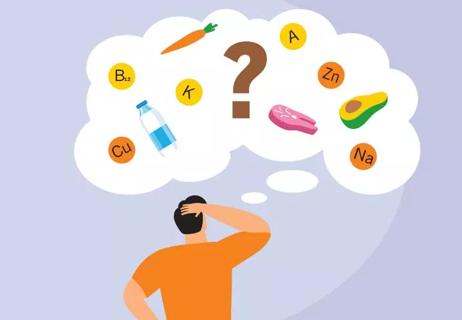
These essential elements from fats, protein, carbs, vitamins and minerals help your body function properly
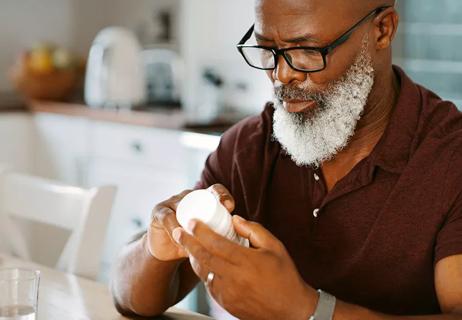
Experts are at odds over the effectiveness of multivitamins

Be sure to tell your doc about over-the-counter pills and powders
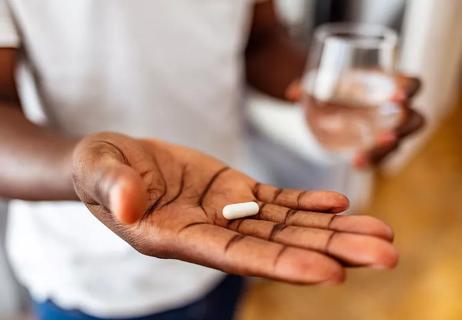
Sync your supplements with your schedule for maximum benefits

Do’s and don’ts for supplementing without a stomach ache

A daily dose of vitamin D can help babies build strong bones, as well as boost their brain development
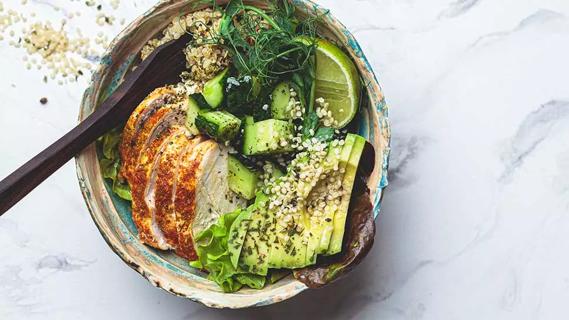
Also known as pantothenic acid, vitamin B5 helps your metabolism and is found in a wide range of foods
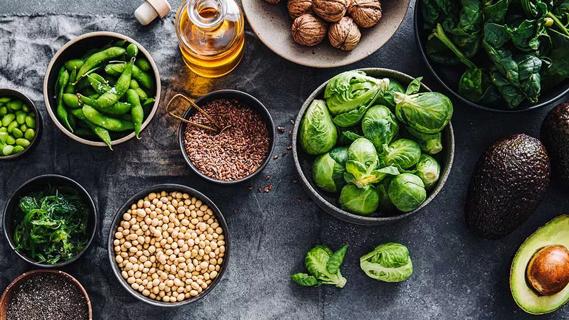
Easy to get from healthy foods, vitamin E can help protect your eyes, boost your immune system and may lower your risk of cancer

Type 2 diabetes isn’t inevitable with these dietary changes

Applying a hot or cold compress can help with pain